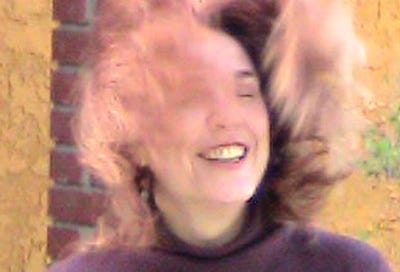Terry Wolverton (born 1954) is best known for launching the Perspectives Writing Program at the Los Angeles Gay and Lesbian Center, including a well-known writing workshop for people with AIDS.
One of her students, Gil Cuadros. was diagnosed with AIDS in 1987 and joined her workshop in 1988. His books City of God (1994) and My Body Is Paper (2024), have cemented his legacy.
Originally from Detroit, her grandmother, Elsba Mae Miller, a former English teacher, would often read and recite poetry to her. Wolverton credits her for imparting a love of language.
In 1997, Wolverton founded Writers at Work, a creative writing center where she teaches fiction, creative nonfiction, and poetry, and provides editorial support to writers.
In 2007, Wolverton co-founded The Future of Publishing Think Tank to bring together writers, publishers, booksellers and publicists to consider new models for reaching readers.
Her memoir Insurgent Muse: Life and Art at the Woman's Building, published in 2002 by City Lights Books, was named one of the "Best Books of 2002" by the Los Angeles Times.
She teaches at Antioch University and is a certified Kundalini yoga and meditation instructor.
Wolverton’s 3 common myths beginning writers believe that keep their work from being extraordinary:
Myth #1: The perfect first draft
New writers sometimes believe that their first draft should be their final draft. And when that first draft doesn't seem very good, they feel despair and sometimes give up.
No one would pick up a clarinet for the first time and expect to sound good, but somehow that's the expectation people have of writing.
More experienced writers know that it's the job of the first draft to be insufficient. The first draft provides a road map to what you're thinking about, but in subsequent revisions (and there might be several) you get to deepen, shape, refine, expand and craft your initial idea. Each re-vision allows you to see-again what you are creating, and continue to discover its potential.
Myth #2: Writing "can't be taught."
While it is true that imagination cannot be taught, it can be encouraged and emboldened. And aside from imagination, there are specific elements of the craft of writing such as imagery, plotting, characterization and point of view that writers need to learn. Without an understanding of these elements, your initial idea for a story, poem or essay may be great, but won’t likely be developed to its full potential. You may recognize that you're not satisfied with it, but you won’t know why or what to do.
There are no shortage of wonderful books about the craft of writing, and here is a great list. http://www.goodreads.com/shelf/show/craft-of-writing
Another way to acquire knowledge of the craft of writing is to enroll in a creative writing workshop.
Myth #3: The Lone Genius
Sometimes it seems as if the great writers just locked themselves in a room (a garret, isn't it?) and produced these incredible works of genius all on their own. Beginning writers sometimes believe that if they have to ask for help, it's somehow cheating.
The truth is, creativity thrives in community. Nearly every writer or artist has a trusted network of readers, colleagues and/or editors who provide encouragement, brainstorming, strategic questions, feedback and perhaps even suggestions about how a work might be strengthened. Writing is communication, and it's useful to know how your communication is being received.
The Genius of Gil Cuadros' 'My Body Is Paper'
Gil Cuadros' long-awaited posthumous new book of short stories and poems, "My Body Is Paper," was recently released by City Lights Books. Although Mr. Cuadros died in 1996 of AIDS at the age of 34, the book's editors Pablo Alvarez, Kevin Martin, Rafael Pérez-Torres,






